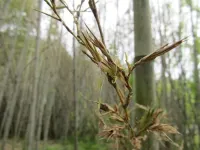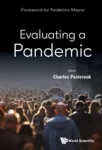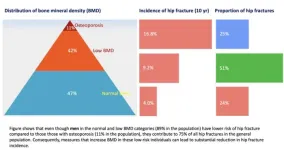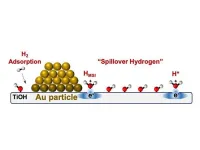(Press-News.org) A long-lived monocarpic species of bamboo, Phyllostachys nigra var. henonis, only flowers once every 120 years before it dies. The upcoming flowering event for this species does not bode well for its continued long-term survival, as most flowers are not producing viable seeds.
Flowering for some plants is a yearly occurrence, for others, it is a once-in-a-lifetime event. A widespread species of bamboo in Japan, Phyllostachys nigra var. henonis, takes this one-time flowering event and pushes it to the extreme: they flower once every 120 years before dying to make way for the next generation. Researchers have realized there might be another issue at hand with this monocarpic species, which is the lack of germination of the seeds from a majority of the flowering specimens. Implications of a once dense field of bamboo, something that serves both as a food source and a source of material for crafts, turning to grassland for several years until the regeneration of bamboo begins to start somehow, can impact the ecology of the area in addition to the country’s economy.
Researchers published their results in PLOS ONE on June 12.
Upon the observation of some early flowering specimens, researchers decided to take advantage of this event to take a deeper look at the regeneration ecology since there is no recorded data since the last flowering of this species took place around 1908. It was found that more than 80% of the sampled culms flowered but all the flowering culms did not produce seeds, indicating this variation of P. nigra does not reliably undergo sexual regeneration via the germination of seeds.
“The bamboo did not produce any viable seeds that can germinate. Bamboo shoot production was stopped after flowering. There was no sign of regeneration of this bamboo after flowering for the initial three years” said Toshihiro Yamada, lead researcher and first author of the study.
Around .17 million hectares of Japan are occupied by three species of bamboo, one of them being P. nigra var. henonis. Given that this variety of bamboo isn’t producing viable seeds, it’s likely once this flowering event occurs, there will be wide open areas of grasslands, changing the ecology of the area in addition to reducing the availability of bamboo as a resource.
The environmental impacts of a rapidly shifting ecological area extend past the insects and animals that rely on the food or shelter of the bamboo stand but also can impact the area for years to come considering the potential for soil erosion. Bamboo can help keep soil in place thanks to its strong and widespread rhizomes, so a sudden loss of a large area of this plant can lead to changing topography of the area.
“So, a bamboo stand will turn into a grassland after bamboo flowering for at least several years. We may need to manage this drastic change after bamboo flowering” Yamada said.
There are measures that can be taken to protect the ecological habitat during the time it takes for the bamboo stands to regenerate, such as fertilizer applications or replanting the same bamboo species from non-flowering stands. However, management of the rapidly spreading rhizomatous bamboo can become an issue that would then need to be addressed regularly and somewhat aggressively.
More information to be gained includes addressing why this variety of bamboo doesn’t produce many viable seeds, and from there, considerations made on the longevity of this species as a whole have to be made, too. Furthermore, due to its aggressive spread and intense management required to keep it from overtaking forests and other agricultural areas, the best time to make widespread changes might be after the flowering event when the bamboo is at its weakest.
###
Toshihiro Yamada, Hitoshi Aoyagi and Miyabi Nakabayashi of the Graduate School of Integrated Sciences for Life at Hiroshima University and Karin Imada of the Department of Integrated Global Studies, School of Integrated Arts and Sciences at Hiroshima University contributed to this research.
The Japan Society for the Promotion of Sciences made this research possible.
About Hiroshima University
Since its foundation in 1949, Hiroshima University has striven to become one of the most prominent and comprehensive universities in Japan for the promotion and development of scholarship and education. Consisting of 12 schools for undergraduate level and 4 graduate schools, ranging from natural sciences to humanities and social sciences, the university has grown into one of the most distinguished comprehensive research universities in Japan. English website: https://www.hiroshima-u.ac.jp/en
END
Flowering for naught: 120 years with nothing to show
2023-09-01
ELSE PRESS RELEASES FROM THIS DATE:
TTUHSC secures National Academy of Inventors membership
2023-09-01
Since its inception in 2009 with 13 founding institutions, the National Academy of Inventors (NAI) has grown to more than 4,600 individual members worldwide from more than 300 U.S. and international colleges and universities, government agencies and non-profit research institutes. That growth continued recently when the Texas Tech University Health Sciences Center (TTUHSC) added its name to the NAI membership roster.
Lance R. McMahon, Ph.D., TTUHSC senior vice president for research and innovation, said the university’s new NAI membership and the appointment of several faculty members as senior members ...
Amsterdam UMC is building models to enable greater use of AI in the health care system
2023-09-01
80% of all patient data is unstructured. Notes from a conversation with a GP, the evaluation of a specialist in a university medical centre or even a recommendation from a pharmacist. While this 'unstructured’ data is no problem for the human eye, it presents an unsurmountable challenge to an AI-algorithm. One that is "preventing AI from reaching its full potential," in the view of Amsterdam UMC, Assistant Professor Iacer Calixto. To give AI the helping hand that it needs, Calixto is set to lead a project that will "tackle the important challenges ...
FAIR data and inclusive science to enable clean energy
2023-09-01
Fusion is the process of combining two light atomic nuclei to form a single heavier one while releasing massive amounts of energy. The Sun and all stars are powered through fusion, which makes it the universe's preferred method of producing energy. Recent breakthroughs in fusion research have led to the US government's Bold Vision for Commercial Fusion Energy and the remarkable growth of the global fusion industry.
To accelerate the development of fusion-powered reactors on Earth, the US Department ...
COVID-19: Lessons from the Pandemic
2023-09-01
‘Let us remember the lessons of the coronavirus to usher in a new era on a global scale with different personal and collective behaviour so that everyone, not just a few, enjoys the dignified life that is their due. We have to remember that we cannot go back to “pre-COVID”. We have to keep in mind that the circumstances before the pandemic most likely contributed in some way to the situation as have had to live it. A radical change of course is indispensable and urgent…”
~Federico Mayor Zaragoza, Former Director-General of UNESCO and Former Member of the European Parliament.
Where did COVID-19 originate? Prof Angus Dalgleish ...
OB/Gyn residency programs should offer more menopause training
2023-09-01
AUGUSTA, Ga. (Sept. 1, 2023) – A nationwide assessment of Obstetrics and Gynecology residency programs reveals the need for more training in how to provide the best care for women going through menopause, according to investigators at the Medical College of Georgia.
“When you look at projections over the next few decades, by 2060, there will be around 90 million women in the US alone, who will be in the post-menopausal range,” says Jennifer Allen, MD, associate professor and director of the Obstetrics and Gynecology Residency Program ...
Deprived teens with poor learning skills at greatest risk from email scams, says expert
2023-09-01
Disadvantaged teenagers are at greater risk of email scams and need better protection, according to an international study published in the peer-reviewed British Journal of Educational Studies.
Findings based on more than 170,000 students aged 15 show that one in five from low-income families or deprived areas could fall victim to phishing. This is much higher than the probability for the age group overall. Email scams leave people vulnerable to identity theft, putting young people at risk of financial fraud and having their savings stripped.
The most vulnerable are those who also have poor learning skills according to the data from 38 countries including ...
Metal organic framework nanosheets employed as ion carriers for self-optimized zinc anode
2023-09-01
Aqueous rechargeable zinc ion batteries are promising in electric grid storage due to their low cost and intrinsic safety. However, their practical implementation is hindered by poor reversibility of the zinc anode, primarily caused by the chaotic Zn deposition present as dendrite and side reactions.
Recently, a research group led by Prof. YANG Weishen and Dr. ZHU Kaiyue from the Dalian Institute of Chemical Physics (DICP) of the Chinese Academy of Sciences (CAS) has proposed a strategy of "ion ...
How little things can reduce hip fractures
2023-09-01
Simple strategies to strengthen your bones, implemented by the whole community not just those at higher risk, could lead to a substantial decrease in hip fractures, a new Australian study suggests.
A hip fracture, particularly in the elderly, dramatically increases the risk of death. Around 37 per cent of men and 20 per cent of women die within one year of a hip fracture. It also causes significant pain and suffering, loss of mobility and independence, and increased healthcare costs.
Distinguished Professor Tuan Nguyen, ...
Heart transplant patients from socioeconomically distressed communities face higher mortality, organ failure risk
2023-09-01
FINDINGS
People from socioeconomically distressed communities who underwent heart transplantation between 2004 and 2018 faced a 10% greater relative risk of experiencing graft failure and dying within five years compared to people from non-distressed communities. In addition, following implementation of the 2018 UNOS Heart Allocation policy, transplant recipients between 2018 and 2022 faced an approximately 20% increase in relative risk of dying or experiencing graft failure within three years compared with the pre-policy period. This is despite the ...
Striking gold with molecular mystery solution for potential clean energy
2023-09-01
UNIVERSITY PARK, Pa. — Hydrogen spillover is exactly what it sounds like. Small metal nanoparticles anchored on a thermally stable oxide, like silica, comprise a major class of catalysts, which are substances used to accelerate chemical reactions without being consumed themselves. The catalytic reaction usually occurs on the reactive — and expensive — metal, but on some catalysts, hydrogen atom-like equivalents literally spill from the metal to the oxide. These hydrogen-on-oxide species are called "hydrogen ...








